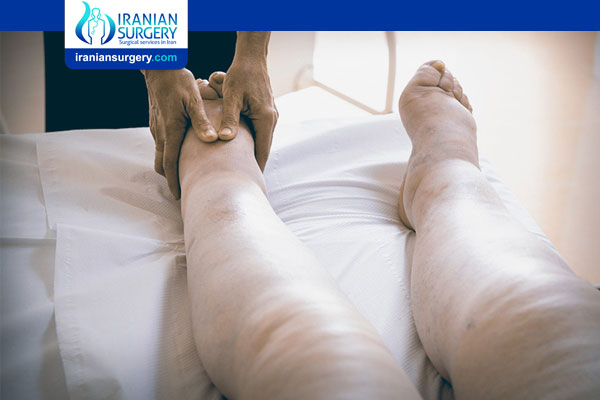Lymphedema Treatment
What is Lymphedema Treatment?
Lymphedema is a form of tissue swelling caused by a buildup of protein-rich fluid that's normally drained through the body's lymphatic system. It most often affects the arms or legs, but can also take place in the chest wall, abdomen, neck and genitals.
Lymph nodes are an important part of your lymphatic system. Lymphedema can be caused by cancer treatments that remove or damage your lymph nodes. Any type of problem that blocks the drainage of lymph fluid can cause lymphedema.
Severe cases of lymphedema can affect the ability to move the affected limb, increase the risks of skin infections and sepsis, and can lead to skin changes and breakdown. Treatment may include compression bandages, massage, compression stockings, sequential pneumatic pumping, careful skin care and, rarely, surgery to remove swollen tissue or to create new drainage routes.
Read more about : Lymphadenectomy
Read more about : Congenital Anomalies
Lymphedema Diagnosis
If you're at risk of lymphedema — for instance, if you've recently had cancer surgery involving your lymph nodes — your doctor may diagnose lymphedema based on your signs and symptoms.
If the cause of your lymphedema isn't as obvious, your doctor may order imaging tests to get a look at your lymph system. Tests may include:
MRI scan. Using a magnetic field and radio waves, an MRI produces 3D, high-resolution images of the involved tissue.
CT scan. This X-ray technique produces detailed, cross-sectional images of the body's structures. CT scans can reveal blockages in the lymphatic system.
Ultrasound. This test uses sound waves to produce images of internal structures. It can help find obstructions within the lymphatic system and vascular system.
Lymphoscintigraphy. During this test, the person is injected with a radioactive dye and then scanned by a machine. The resulting images show the dye moving through the lymph vessels, highlighting blockages.
Lymphedema Treatment
There's no cure for lymphedema. Treatment focuses on reducing the swelling and preventing complications.
Lymphedema Medications
Lymphedema greatly increases the risk of skin infections (cellulitis). Your doctor may prescribe antibiotics for you to keep on hand so that you can start taking them immediately once symptoms appear.
Read more about : Lymph node removal surgery
Therapy
Specialized lymphedema therapists can teach you about techniques and equipment that can help reduce lymphedema swelling. Examples include:
. Exercises. Gentle contraction of the muscles in the arm or leg can help move the excess fluid out of the swollen limb.
. Manual lymph drainage. Therapists trained in this massage-like technique use very light pressure to move the trapped fluid in the swollen limb toward an area with working lymph vessels. People should avoid manual lymph drainage if they have a skin infection, blood clots or active cancer in the affected limb.
. Compression bandages. Using low-stretch bandages to wrap the entire limb encourages lymph fluid to flow back toward the trunk of the body.
. Compression garments. Close-fitting elastic sleeves or stockings can compress the arm or leg to encourage lymph fluid drainage. These garments often require a prescription to ensure that the proper amount of compression is used. You may need to be measured by a professional to ensure proper fit.
. Sequential pneumatic compression. A sleeve worn over the affected arm or leg connects to a pump that intermittently inflates the sleeve, putting pressure on the limb and moving lymph fluid away from the fingers or toes.
Surgical and other procedures
Surgical treatment for lymphedema may include:
. Lymph node transplant. Lymph nodes are taken from a different area of the body and then attached to the network of lymph vessels in the affected limb. Many people with early-stage lymphedema see good results from this surgery and can decrease the amount of compression needed.
. New drainage paths. Another option for early-stage lymphedema, this procedure creates new connections between the lymph network and blood vessels. The excess lymph fluid is then removed from the limb via blood vessels.
. Removal of fibrous tissue. In severe lymphedema, the soft tissues in the limb become fibrous and hardened. Removing some of this hardened tissue, often through liposuction, can improve the limb's function. In very severe cases, hardened tissue and skin may be removed with a scalpel.
Lymphedema Lifestyle and Home Remedies
To reduce the risk of complications from lymphedema, avoid injuring the affected limb. Cuts, scrapes and burns can invite infection. Protect yourself from sharp objects. For example, shave with an electric razor, wear gloves when you garden or cook, and use a thimble when you sew.
Coping with Lymphedema and Getting Support
It can be frustrating to know there's no cure for lymphedema. However, you can control some aspects of lymphedema. To help you cope, try to:
. Find out all you can about lymphedema. Knowing what lymphedema is and what causes it can help communication with the doctor or physical therapist.
. Take care of the affected limb. Clean your skin daily, looking over every inch of the affected limb for signs of trouble, such as cracks and cuts. Apply lotion to prevent dry skin.
. Take care of your whole body. Eat a diet rich in fruits and vegetables. Exercise daily, if you can. Reduce stress. Try to get enough sleep. Taking care of your body gives you more energy and encourages healing.
. Get support from others with lymphedema. Whether you attend support group meetings in your community or participate in online message boards, it helps to talk to people facing similar difficulties.
Source:
https://www.mayoclinic.org/diseases-conditions/lymphedema/diagnosis-treatment/drc-20374687


